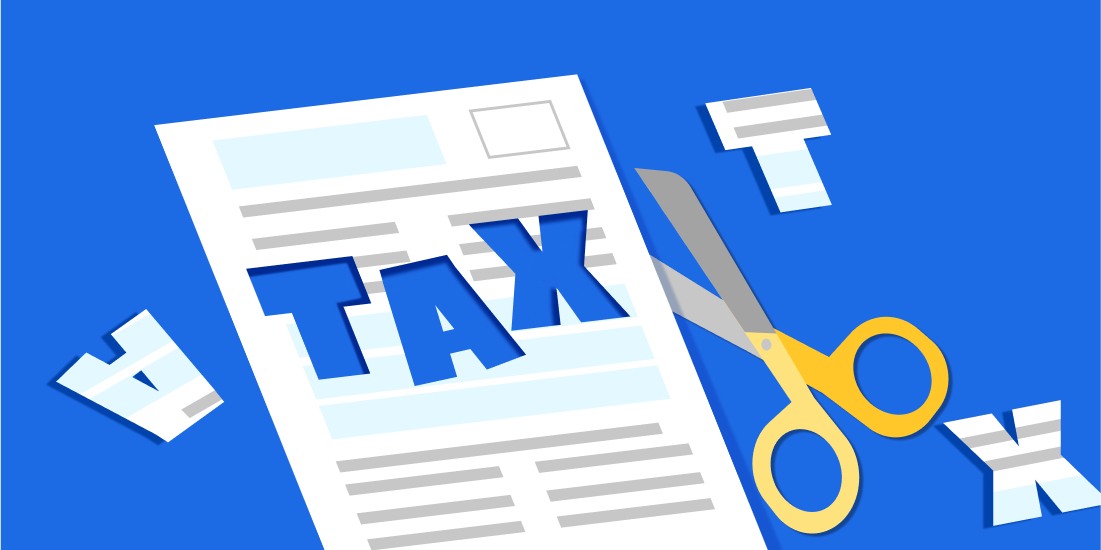Resources

Sort by:
-
![]()
Inside the investing kitchen, part 1
Inside the investing kitchen, part 1 Jun 24, 2025 11:30:00 AM The recipe for a better portfolio, and the science behind a safer nest egg. Jamie Lee isn’t a Top Chef, but he knows his way around the kitchen. He dabbles in sous vide with the help of a sous chef (his 6-year-old daughter). He loves smoking salmon low and slow on a pair of pellet grills. And in some ways, his day job on the Betterment Investing team resembles the culinary world as well. He and his teammates work in a test kitchen of sorts, defining and refining the recipes for our low-cost, high-performing, and globally-diversified portfolios. They size up ingredients, pair flavors, and thoughtfully assemble the courses of each “meal.” All in service of customers with varying appetites for risk. It's highly-technical work, but we wouldn't be Betterment if we didn't make our methodologies as accessible as possible. So whether you're kicking the tires on our services, or you're already a customer and simply curious about the mechanics of your money machine, come along for a three-part, behind-the-scenes look at how we cook up a better portfolio. Here in part 1, we'll explore how we allocate your investing at a high level. In part 2, we'll zoom in to our process for selecting specific funds. And in part 3, we'll show you how we handle thousands of trades each day to keep our customers’ portfolios in tip-top shape. The science behind a safer nest egg Betterment customers rely on Jamie and team to do the heavy lifting of portfolio construction. They distill handfuls of asset classes, a hundred-plus risk levels, and thousands of funds into a simple yet eclectic menu of investment options. And underpinning much of this process is something called Modern Portfolio Theory, a framework developed by the late American economist Harry Markowitz. The theory revolutionized how investors think about risk, and led to Markowitz winning the Nobel Prize in 1990. Diversification lies at the heart of Modern Portfolio Theory. The more of it your investing has, the theory goes, the less risk you're exposed to. But that barely scratches the surface. One of the meatiest parts of building a portfolio (and by extension, diversifying your investing) is how much weight to give each asset class, also known as asset allocation. Broadly speaking, you have stocks and bonds. But you can slice up the pie in several other ways. There’s large cap companies or less established ones. Government debt or the corporate variety. And even more relevant as of late: American markets or international. Jamie came of age in South Korea during the late 90s. Back here in the States, the dot-com bubble was still years away from popping. But in South Korea and Asia more broadly, a financial crisis was well underway. And it changed the trajectory of Jamie’s career. His interest in and application of math shifted from computer science to the study of markets, and ultimately led to a PhD in statistics. Jamie Lee (right) helps optimize the weights of asset classes in Betterment portfolios. For Jamie, the interplay of markets at a global level is fascinating. So it’s only fitting that when optimizing asset allocations for customers, Jamie and team start with the hypothetical "global market portfolio," an imaginary snapshot of all the investable assets in the world. The current value of U.S. stocks, for example, represents about two-thirds the value of all stocks, so it's weighted accordingly in the global market portfolio. These weights are the jumping off point for a key part of the portfolio construction process: projecting future returns. Reverse engineering expected returns “Past performance does not guarantee future results.” We include this type of language in all of our communications at Betterment, but for quantitative researchers, or “quants,” like Jamie, it’s more than a boilerplate. It’s why our forecasts for the expected returns of various asset classes largely aren't based on historical performance. They're forward-looking. "Past data is simply too unreliable," says Jamie. "Look at the biggest companies of the 90s; that list is completely different from today.” So to build our forecasts, commonly referred to in the investing world as Capital Market Assumptions, we pretend for a moment that the global market portfolio is the optimal one. Since we know roughly how each of those asset classes performs relative to one another, we can reverse engineer their expected returns. This robust math is represented by a deceivingly short equation—μ = λ Σ ωmarket—which you can read more about in our full portfolio construction methodology. From there, we simulate thousands of paths for the market, factoring in both our forecasts and those of large asset managers like BlackRock to find the optimal allocation for each path. Then we average those weights to land on a single recommendation. This “Monte Carlo" style of simulations is commonly used in environments filled with variables. Environments like, say, capital markets. The outputs are the asset allocation percentages (refreshed each year) that you see in the holdings portion of your portfolio details Hypothetical portfolio; for illustration only At this point in the journey, however, our Investing team's work is hardly finished. They still need to seek out some of the most cost-effective, and just plain effective, funds that give you the intended exposure to each relevant asset class. For this, we need to head out of the test kitchen and into the market. So don’t forget your tote bag. -
![]()
Inside the investing kitchen, part 2
Inside the investing kitchen, part 2 Jun 24, 2025 11:25:00 AM See how we source the higher-quality, lower-cost funds that fill up your portfolio. A lot goes into the making of a single Betterment portfolio. So much that we're spreading out this showcase of our Investing team's work over three parts. In part 1, we explore how we allocate customers’ investing at a high level, and in part 3, we show how we handle thousands of trades each day to keep their portfolios humming. And here in part 2, we zoom into a topic that may be a little more relatable for the everyday investor: picking the actual investments themselves. If asset allocation is like refining a recipe, then today's topic of fund selection is all about the sourcing of higher-quality, lower-cost ingredients. And for that, we turn our eye toward a market of another kind. Josh Shrair specializes in shopping capital markets here at Betterment, picking the funds that fill up your portfolio's respective allocations. His line of work looked a little different decades ago, back when his step dad was working as a trader on Wall Street. Back then, this level of attention to portfolio construction and fund selection was typically in service of only the ultra wealthy. But now, Josh and team navigate a rapidly-expanding universe of investments on behalf of everyday investors. Why shopping for funds isn't always so simple On one hand, the recent explosion of investment options has been great for investors. Increased competition drives down costs and opens up access to newer, more niche markets. But more choice also leads to more complexity. Take Exchange Traded Funds (ETFs), our preferred building block for portfolios thanks to their transparency, tax efficiency, and lower costs. They bundle up hundreds, and sometimes thousands, of individual stocks and bonds. But even ETFs are multiplying fast. In 2024 alone, 723 new ones launched, bringing the total to nearly 4,000. To illustrate this abundance, let's say your asset allocation calls for a heaping serving of “Large Cap” stocks, meaning companies valued at $10 billion or more. Nearly 500 ETFs populate this particular corner of the ETF universe. We can narrow that group down to 30 based on the specific exposure we’re looking for, like say U.S. Large Cap companies, or the S&P 500, a list or “index” of 500 of the biggest American companies. But the due diligence is hardly done. Some ETFs that track the S&P 500 follow it faithfully, while others put their own spin on it, which can open investors up to unintended exposure. Josh Shrair (second from left) helps navigate a rapidly-expanding universe of ETFs on behalf of Betterment customers. Just as crucially, their costs are all over the place, and higher fees can erode your returns in the long run. That's why the SPDR fund is currently our Core portfolio’s primary way of achieving U.S. Large Cap stock exposure. It offers both a low cost to hold (0.02%) and a low cost to trade (0.03% at the time of writing), making for a low overall cost of ownership. "Shopping for investments is a little like buying a car," Josh says. "The total cost is way more than the sticker price." How we calculate cost of ownership Part of our role as a fiduciary, someone who's legally obligated to act in their clients' best interests, is conducting a deep and unbiased evaluation of the ETFs used in our portfolios. The process Josh and team use is entirely "open architecture," meaning we’re not obligated to use funds from any particular provider. Instead, we strive to select the most optimal ones in terms of cost and exposure. It helps that Betterment itself doesn't make, manage, and sell funds, which means we avoid the inherent conflict of interest some advisors face when they also act as a fund manager. These firms can be tempted to steer customers toward their own funds, even when a better alternative exists. So we take pride in the due diligence behind our fund selection, and that begins with our "cost of ownership" scoring methodology. It factors in the two types of costs mentioned earlier: the cost to "hold" or own a fund, also known as its expense ratio, and the cost to trade it. As you'll see in part 3 of this series, a portfolio is hardly static. Deposits come in. Withdrawals go out. Rebalancing takes place on the regular. All of this requires daily trading, so the cost of those transactions matters to your investing's bottom line. The cost-to-trade is also known as the "bid-ask spread," or the markup that traders expect when selling a share. It's how they make money, and similar to wholesalers and retailers like Costco, the bigger the fund, the smaller the margins a trader can live with. Seeking out these value buys is how we're able to deliver globally-diversified portfolios at a fraction of the cost of alternatives on the market today. And we’re never done shopping. Our preferred funds are updated multiple times throughout the year. Primed for the purchase There's a lot more to our fund selection methodology, especially for funds that aren’t tied to a specific index, but are instead made from scratch. Some fund managers like Goldman Sachs, where Josh worked earlier in his career, also blend both approaches into a “smart beta” strategy. We offer one such portfolio alongside our Betterment-built collections. But for the sake of this series, let's pretend for a moment that our tote bags are full, and we're ready to check out. It’s time to meet the team behind every transaction at Betterment. -
![]()
Inside the investing kitchen, part 3
Inside the investing kitchen, part 3 Jun 24, 2025 11:16:45 AM Order up! See how we handle thousands of trades each day to keep customers’ portfolios humming. When a chef plates a meal, they typically send it off, never to be seen again. But serving up an investing portfolio is an ongoing affair. Deposits come in. Withdrawals go out. Asset classes grow and shrink as the market moves. Rebalancing takes place on the regular. All of this requires daily trading. And this buying and selling of securities is among the most intricate and highly-regulated pieces of our operations. So while the first two parts of this series cover the recipes and ingredients behind our investing, our final course focuses on the team—and tech—behind every transaction. What happens when you hit "deposit" Cara Daly is an adventurer at heart. An avid surfer and the daughter of a flight attendant, she racks up air miles chasing waves and visiting family in Ireland. So naturally, she's gravitated toward one of the more thrill-seeking roles on our Investing team: Capital Markets. From the minute markets open each day, Cara and team monitor the action, making sure our customers' orders go smoothly. These trades can amount to hundreds of millions of dollars in a single day, and the system that executes them all is in many ways our secret sauce. It's custom-built (a rarity in the industry) and plays the role of Mission Control. When a customer clicks "deposit," for example, that single click gets translated into a series of purchases. These in turn get bundled up with other purchases of a like-kind and turned into orders, which are then executed at calibrated intervals as a part of our managed trading strategy. This sort of intentional trading is incredibly important because of the scale of our operations. We manage more than $56 billion of assets, making us the largest independent robo-advisor out there. We may not "make" markets, but our trading volume is big enough to potentially influence them. So we need to be mindful of how and when our trades get executed. “Say the market trades $10 million of a hypothetical security on any given day,” Cara says. “If our customers happen to want $20 million of it, meeting all that demand without minding the bigger context could drive up the price.” To navigate these executional challenges, we deploy multiple strategies as needed (see below for a few examples), evaluating and calibrating each on a continuous basis. Taken altogether, they help ensure our customers' purchases and sales get treated fairly in the market. Waiting out the first half hour after markets open before starting our trading. This helps sidestep some of the volatility that's common early in the day. Trading periodically throughout the day, and randomizing when customers’ orders are processed. It's possible that prices can loosely correlate with certain times of the day, so we don't want that to consistently affect any one customer. Briefly holding back on “system-generated” trading (proactive rebalancing, for example) for any particular fund if its trading reaches a certain threshold relative to its average daily volume. This helps make sure “user-directed” trading (when customers make deposits or withdrawals, to name a few examples) can continue regardless. Partnering with industry experts like Apex to route and execute orders across multiple firms, helping us stay at the forefront of the evolving market landscape. This access to different execution venues also helps seek out the most favorable terms for customers—whether that’s price, speed, or overall execution quality. Switching gears from execution to tax optimization, we also use both primary and secondary funds for most of our asset classes. These backup “tickers” come into play during times of heightened volatility in markets. Moments that can make or break an investing strategy. Acing the stress test of market volatility More often than not, it's business as usual on our Capital Markets team, and that's by design. But during stretches of extreme volatility, when trading volume really picks up and prices can swing wildly from hour to hour, it's all hands on deck. Cara and company monitor our trading system for signs that additional oversight may be needed. They ease emerging bottlenecks in real time and keep things running smoothly, at times enlisting the support of our Trading Engineering team. Cara Daly (left) helps make sure customers’ daily trading goes smoothly. Take April of 2025 for example. Early in the month, the Trump administration caught investors off guard by announcing a series of tariffs way higher and way earlier than expected. The announcement, and the inconsistent messaging that followed, set off a wild, weeks-long stretch of trading. Prices of some securities cratered in the morning only to recover by day's end. Our systems not only weathered this storm, but capitalized on it, taking advantage of small windows of time to harvest tens of millions of dollars in temporary losses for customers before prices recovered. This strategy of tax loss harvesting helps sprinkle tax advantages on a portion of customers' taxable investing, and it wouldn’t be possible without the help of those aforementioned secondary tickers. These funds help avoid “wash sales” while maintaining customers’ desired exposures and risk levels. Something delicious is simmering The image of a golden harvest is an apt one, considering this series looks at our Investing team's work through a culinary lens. Many of our customers come to us not necessarily for a single serving of returns, but to plant the seeds for self-sustaining, long-term wealth. A harvest that supports a more-fulfilling life. Cara and the rest of our Capital Markets experts are a big part of that lifecycle, tending to thousands of daily trades that optimize our customers’ portfolios over and over again. That's the beauty of using technology as a tool to expand our own capabilities and deliver results at scale. It's a people-led process. We became a trusted leader in automated money management not because of our tech, but because of the people who build and use it each day. Specialists like Cara, Josh, and Jamie—They're our secret ingredient, working in service of customers hungry for a better way to invest. Bon appétit. -
![]()
Four ways we help trim your tax bill
Four ways we help trim your tax bill Jun 9, 2025 7:00:00 AM And why these "invisible" wins matter more than you may think. As investors, we tend to focus most on what we can see. Things like portfolio makeup, and the returns generated by those investments. No less important, however, are the less obvious things, like the taxes you never paid in the first place because of technology that quietly runs in the background. You may only think about taxes once a year, but here at Betterment, every day is Tax Day. This sort of year-round tax optimization sounds boring, but believe us, it makes a difference. Taxes can steadily eat away at your returns over the years. So any advisor worth their salt should take taxes seriously and minimize them as much as possible. These “invisible” wins are hard to spot in the moment, so let’s shine a light on them now. Here are four sophisticated ways we buy, sell, and hold your shares, all in the name of trimming your tax bill. Choosing which assets go where – Our Tax Coordination feature helps shield high-growth assets in the most tax-efficient account types. Rebalancing wisely – We take advantage of any existing cash flows to help minimize capital gains taxes while rebalancing your portfolio. Choosing which taxable shares to sell (or donate) – Our TaxMin technology helps minimize short-term capital gains taxes. Harvesting losses – When your taxable investments dip below their initial purchase price, we jump on the opportunity to “harvest” the theoretical loss and potentially lower your future tax bill. 1. Choosing which assets go where From a tax perspective, you have three main account types at your disposal when saving for retirement: Tax-deferred (traditional IRAs, 401(k)s, etc.), where taxes are paid later. Tax-exempt (Roth IRAs, 401(k)s, etc.), where taxes are paid now. Taxable, where taxes are paid both now and later. Because of their different tax treatments, certain types of investments are a better fit for certain accounts. Interest from bonds, for example, is typically taxed at a higher rate than stocks, so it often makes sense to keep them away from taxable accounts. This sorting of asset types based on tax treatments, rather than divvying them up equally across accounts, is known as asset location. And our fully-automated, mathematically-rigorous spin on it is called Tax Coordination. When Tax Coordination is turned on, the net effect is more of your portfolio's growth is shielded in a Roth account, the pot of money you crucially don't pay taxes on when withdrawing funds. To learn more about our Tax Coordination feature and whether it’s right for you, take a peek at its disclosure. 2. Rebalancing wisely When the weights of asset classes in your portfolio drift too far from their targets, our technology automatically brings them back into balance. But there's more than one way to accomplish this portfolio rebalancing. You can simply sell some of the assets that are overweight, and buy the ones that are underweight (aka "sell/buy" rebalancing), but that can realize capital gains and result in more taxes owed. So we first take advantage of any available cash flows coming into or out of your portfolio. When you make a withdrawal, for example, we intentionally liquidate overweight assets while striving to minimize your tax hit as much as possible (more on that below). And when you deposit money or receive dividends, we use those funds to beef up underweight assets. 3. Choosing which taxable shares to sell (or donate) Say there's no way around it: you need to sell an asset. Maybe cash flows aren't enough to keep your portfolio completely balanced. Or you’re withdrawing funds for a major purchase. The question then becomes: which specific assets should be sold? The IRS and many brokers follow the simple script of "first in, first out," meaning your oldest assets are sold first. This approach is easier for your broker, and it can avoid more highly-taxed short-term capital gains. But it often misses the opportunity of selling assets at a loss, and harvesting those losses for potential tax benefits. So our algorithms take a more nuanced approach to selecting shares, and we call this technology TaxMin. TaxMin is calibrated to avoid frequent small rebalance transactions and seek tax-efficient outcomes, things like avoiding wash sales and minimizing short-term capital gains. In the case of donating shares, we apply the same logic in reverse, or TaxMax as we call it. That's because when donating shares, it benefits you to choose the ones with the most gains, since any shares bought as a replacement will effectively have a reset tax bill. 4. Harvesting losses Life is full of ups and downs, and your investments are no different. At times, most notably during market downturns, the price of an asset may dip below what you paid for it. Tax loss harvesting takes advantage of these moments, selling taxable assets that fit this bill, then replacing them with similar ones so you stay invested. You can then use those harvested losses to shift taxes you owe now into the future. The strategy doesn’t make sense for everyone, but it can help some investors sprinkle tax advantages on a portion of their taxable investing. And our fully-automated spin on it takes a tax hack once reserved for the wealthy and makes it available to the masses. Happy harvesting. In conclusion, we care a lot about taxes Because it’s one of the most reliable ways to boost your returns. We can’t control the market, but tax laws? Those are set by the IRS and broadcast far and wide. And we can help you navigate them wisely. We wouldn’t be doing our job if we didn’t. So the next time you take a peek at your returns, ask yourself how much of that growth will still be there come tax time. If you’re a Betterment customer, you can rest assured we’re working tirelessly to minimize those tax drags. You may not realize it right away, and rightfully so. Live your life, and leave the tax toiling to us. -
![]()
How to course correct when you simply can't stay the course
How to course correct when you simply can't stay the course May 12, 2025 3:20:36 PM De-risking during market volatility can be costly. Here’s how to do it without breaking the bank. The best course of action during market volatility is often inaction. That’s because selling riskier assets at a loss locks in those losses. It foregoes their potential for future growth, and it might also trigger capital gains taxes in the process. But if taking some sort of action feels necessary, then modestly reducing your overall risk exposure can be a reasonable alternative. Consider dialing down your existing stock allocation by a few percentage points, or lower the costs of recalibrating by using your future deposits instead. Either way, the solution may be the same: sprinkling in more bonds. Consider bonds to calm your investing nerves When people talk about diversification, equities like international stocks get most of the attention. But no less important in the role of managing risk are bonds. These are the loans given to governments and companies by investors, and while they're not completely risk-free (no asset is), the relatively-modest interest they tend to pay out can feel like a windfall when stock values are plunging. They won’t negate all of the volatility of stocks, but they can help smooth things out and preserve capital. This is why all of our recommended allocations include holding at least some bonds. One way to de-risk some of your future investing is with one of our portfolios made up of both stocks and bonds (Core, Value Tilt, etc.). We’ll recommend a risk level based on your goal, but we make it easy to dial up the bond allocation to your preference. Over time, you can slowly finetune things until your collective risk feels right. Or you can let us automatically adjust it based on your target date. We also offer two portfolios comprised entirely of bonds, each one designed for a different use: The BlackRock Target Income portfolio, designed to help you limit market volatility, preserve wealth, and generate income. The Goldman Sachs Tax-Smart Bonds portfolio, designed for high-income individuals seeking a higher after-tax yield compared to a cash account. Don’t forget about the role of cash One of the best ways to mitigate your overall financial risk is by shoring up your emergency fund, which may include a high-yield cash account like our Cash Reserve. Imagine losing your income stream, and how much time you'd want to get back on your feet. A good place to start is 3-6 months' worth of your essential expenses, but your right amount is whatever helps you sleep more soundly at night. Steadying the ship during unsteady times As we mentioned up front, right-sizing your risk during downturns isn’t always cheap. But there are ways to minimize the costs. Lowering your risk profile incrementally is one of them, and stretching out your safety net is another. Either way, it’s okay to recalibrate your risk tolerance from time-to-time, and you can do it wisely with Betterment. -
![]()
With U.S. markets struggling, is now the time to go global?
With U.S. markets struggling, is now the time to go global? May 7, 2025 6:00:00 AM Here’s the case for keeping a little international exposure in your investing. U.S. stocks have been the envy of the world since 2010, generating nearly 4 times the returns of their international counterparts. But since April 2, President Trump’s tariff policies have dragged down U.S. stocks and left investors unnerved. Does this mean the U.S. market is toast? Certainly not, but it does signal a potential shift in foreign investment, which means that if you haven’t already, now may be the time to consider diversifying globally. And we can help on that front. Hello, world. We're here to invest. The U.S. market is big, but it’s not the only game in town. Hundreds of billions of dollars in assets trade hands in international markets each day. It's why the Betterment Core portfolio, built on the idea that more diversification equals less risk, roughly mirrors the relative weights of global markets. Like we mentioned above, the U.S. market has been on an absolute tear the past 15 years, and even more so since 2020. This record winning streak has fueled our home bias, or the tendency for American investors to favor American markets. But history shows a pendulum that typically swings back and forth every 5 to 10 years. International markets outperformed in the 2000s, for example, and they saw a huge spike in the late 80s. So what’s an investor to do? If you're investing for the long term, the odds are good the U.S. market will hit at least one extended rough patch in that time. And in that scenario, a globally-hedged portfolio will very likely smooth out your returns from year to year. We’re seeing this start to play out in 2025, with the Betterment Core portfolio and its global diversification outperforming many common U.S.-only funds. As of 5/2/2025. Betterment Core composite actual time-weighted returns: 10.52% over 1 year, 12.35% over 5 years, and 7.30% over 10 years as of 5/2/2025. Composite performance calculated based on the dollar weighted average of actual client time-weighted returns for the Core portfolio at 90/10 allocation, net fees. Performance not guaranteed, investing involves risk. That being said, diversification is a sliding scale. There is no pass/fail, no good or bad. If you’re looking for a little more international exposure, but not to the extent of one of our pre-built portfolios, you can invest in our Flexible portfolio and tailor your allocation as you see fit. But if you’re less experienced in investing, and simply want an option that requires less work, then let us do the recalibrating for you. We update our pre-built portfolios annually, finetuning our U.S. and international exposures based on the latest long-term projections. We can’t predict when the global tides will turn, but we can make sure you don’t miss out when they do.






